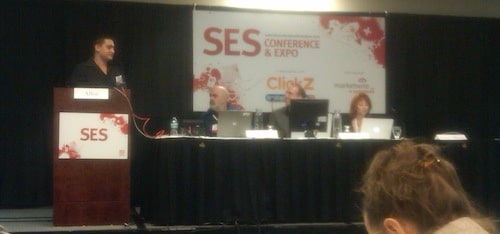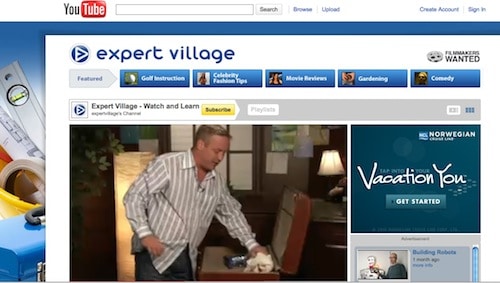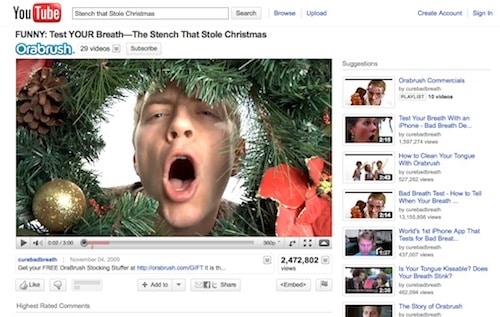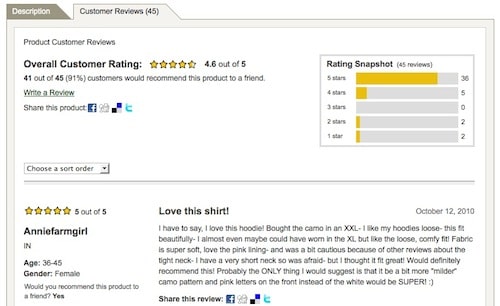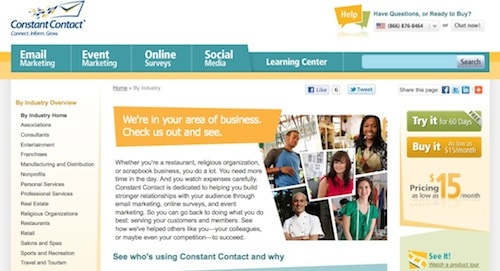The beginning of the end of Day 1 at #SESCHI 2010 found some marketers fidgeting in their final session rooms, anxious to get to the cocktail reception (free-drink tickets clutched tightly in clammy hands…). But it’s safe to say that those attending the “Delivering Great Content” panel were more anxious for the strategies sure to be shared by a power-house team of presenters more than anything else. Greg Jarboe, president and co-founder of SEO-PR, Michael DeHaven, SEO Product Manager, Bazaarvoice & Heather Lloyd-Martin, CEO, SuccessWorks dolled out great insights on three facets of content: video content, user-generated content and SEO copywriting strategies.
AIMCLEAR live-tweeted this session (via @lindsaylorraine). Read on for tips they shared with the Search Engine Strategies audience.
Video Content
Jonathan Allen, director of SearchEngineWatch, kicked off the session with a welcome and introduction of the first speaker. Greg’s presentation concentrated on using video as part of a comprehensive content strategy. Greg began his fascinating look into the whys and hows of video content by asking why marketers should care about video. That question can best be answered by one stunning statistic:
- Americans watch more videos a month on YouTube than they conduct searches on Google.
Upon hearing this, half the audience felt like they’d been hit by a truck. Jarboe stressed that if you’re not in the game, you’re missing out on a huge opportunity. This applies not just to major consumer-facing corporations, but to small and medium sized businesses as well as B2B companies.
How to Develop Great Video Content
This often involved & consuming process can best be summed up with a good old-fashioned model of communication, namely:
- Who says what in which channel to whom and with what effect?
1) Identifying the who– this is arguably the most difficult step (who, meaning who will you put on camera). Relax, you don’t have to put your CEO on camera. While the who is important, it doesn’t need to be the most important person in your operation. Greg points out that you might want to use the CEO only if he/she is charismatic (a decently pretty face doesn’t hurt, either…). Although difficult for the C-suite to grasp, putting customers, employees—anyone but the usual suspects—on video can be a great strategy.
Greg offered this case-in-point that hit the nail on the head:
- During the 2008 election season, Barack Obama’s campaign made over 11,000 videos.
- Obama himself appeared in only 10% of them.
- Out of those, only 2% required him to take time out of his schedule to film.
What does this tell us?
- Developing great video content does not mean producing over-scripted, under-rehearsed talking-head snooze-fests.
2) The second consideration is what to say. Greg pointed out that humorous videos take the cake, but the second most popular genre is news. Another concept is how-to videos, which are incredibly popular. For evidence of this, look no further than YouTube itself, where the second most popular channel is ExpertVillage. Comical and how-to videos are equally popular. Being funny is difficult (especially for a bunch of executives, not to mention the legal department), but most businesses should be able to create some kind of how-to.
3) Once that fancy video is complete and ready to share, Greg moved onto the next step– determining where to put it. 86% of video searchers end up on YouTube (Hulu is 2nd with about 3%, but you can’t upload your video to that site). So where should you focus your energy on placing that video? Greg says:
- YouTube.
- YouTube.
- YouTube.
Once it’s there, embed it on your website, post it to Facebook and look for other opportunities to share it.
4) What about effect? In other words, how do you know your content is great? Unsurprisingly, it’s not you or your boss who decides whether the video is good. The vote that matters is that of the community that watches the video. So, think like your customers, or potential customers. Need inspiration? Check out this hit, “The Stench that Stole Christmas.” This video helped OraBrush sell $1 million worth of $5 tongue brushes! How’s that for ROI?
Greg wrapped up with another stunner of a stat: a video is 50 times more likely to get a first-page Google ranking than a text page. So, boys and girls, the lesson here is that if you’re not doing it (video, that is—minds out of the gutter, please) you’re missing out big time!
User-Generated Content
Up next to discuss the merits of user-generated content (UGC) was Michael DeHaven. After flinging several screaming monkeys into the audience (seriously… fortunately they were meretoys & no one needed to call PETA), Michael delivered multiple knock-your-socks-off stats supporting his ultimate message: you need to have user-generated content, such as reviews and Q&As, on your site! Here’s why:
- Fresh content will increase crawls and site traffic
- Products with reviews convert 38% better
- Q&A increases conversions even more
Michael offered several real life examples of sites that have employed UGC, among them OpenTable and Cabela’s. Review content on pages caused a 17% lift in traffic from search engines on OpenTable, while reviews increased search traffic by 200% at Cabelas.com.
Michael explained that sites should use UGC to:
- Inject freshness and richness into optimized pages
- Expose UGC by creating UGC archives, and
- Ask users to contribute.
Be advised & aware that UGC has the potential to destroy your SEO work if you do it wrong. However, the upside is that users can write what you, as a marketer, can’t (without sounding like a fool). That means natural language, positively trending words, and much more.
So what should you do? As Michael put it, ask, ask, ask for user-generated content!
SEO Copywriting Strategies
Heather Lloyd-Martin rounded out the session with a look at some killer SEO copywriting strategies. Among the things to focus on, she explained, are customized landing pages. She suggested splitting landing pages into different verticals, offering ConstantContact.com as the shining example.
Constant Contact understands that the benefits of using its services aren’t the same for salons and restaurants, so there would be little to gain from serving a salon owner and restaurateur the same “We’re awesome for these reasons” marketing copy. These landing pages should offer specific benefit statements for each industry, which would results in content that resonates with readers.
Another consideration is to change how you write your copy. If you make it more personal, it can have an incredible effect on conversion rates. When writing web copy, tell your customers and potential customers specifically how you can help them. Keep in mind that storytelling sells, but don’t forget key phrases.
Checking analytics and review pages with high bounce rates is another excellent strategy. Think about how you can rewrite those pages to reengage customers. One of the top bounce-rate pages, incidentally, is the ‘About Us’ page on corporate websites. Heather, Greg and Michael each offered tips to improve this much-maligned mainstay of corporate America, namely:
- Reduce the marketing speak on the page. No one cares if your company offers “a multi-platform communication suite for cross-functional team interaction” if what you make is chat software.
- Ask others (preferably those external to, but knowledgeable in your business) how they would describe what you do and use that language on the page. You might also consider getting a feed coming in from Twitter or embedding video.
And don’t forget to optimize page titles. A title is like a headline. It is meant to entice the reader to click. Although space is limited, try to include key phrases, a benefit statement, and even a call-to-action.
Heather concluded by noting that all of this can be overwhelming. It is not meant to, nor should it be done all at once. She encouraged attendees to commit to a baby-step strategy. Start with the top 5 bounce rate pages, then create an editorial calendar to accomplish the other tasks.
With that, the panel wrapped up & the audience applauded. Then, almost immediately, everyone made a bee-line for the bar. But what a culmination to Day 1 of #SESCHI! Stay tuned for more coverage here in AIMCLEAR Blog, and of course, follow the AIMCLEAR team’s live-tweets from @aengleson (Alyssa), @beebow (Lauren) & @lindsaylorraine (moi).
